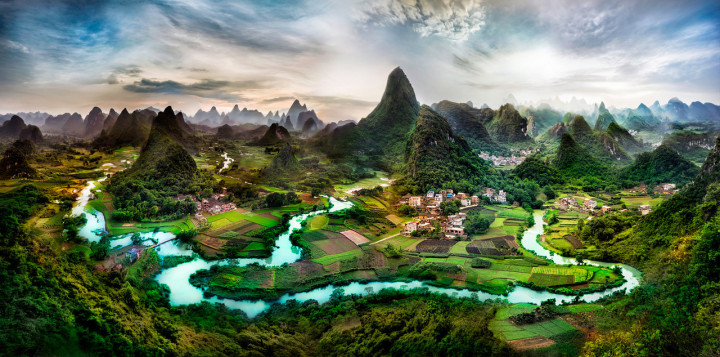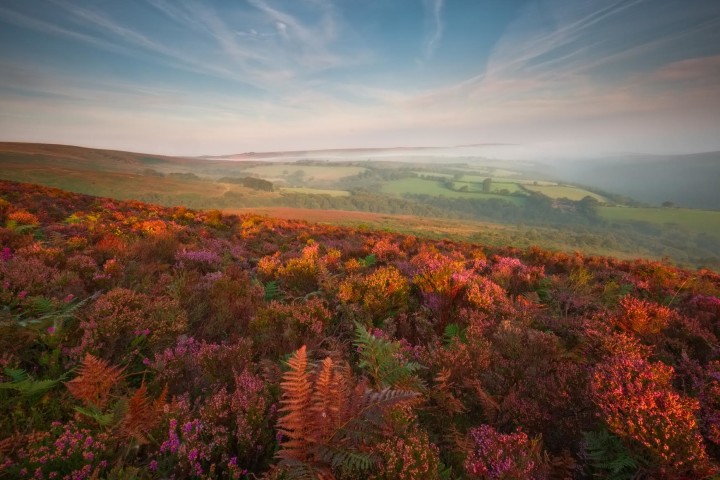The world of digital photography is richer in camera accessories than it is in cameras themselves. For any given camera, there are at least a dozen accessories to match, many of which have been expressly designed for that specific model. Indeed, it is no surprise that some of our most popular articles here on MirrorLessons are accessory lists.
Although Mathieu and I have the chance to try a number of mirrorless camera accessories, it is highly unlikely that we’ll ever be able to try them all. Even if we could, we would inevitably wind up promoting the products that suit us the best.
The thing is, what works for us may not work for you. This is why, for this particular list, we decided to seek out the opinion of fifteen well-known professional photographers who use mirrorless cameras.
We focussed on four accessories that people are most likely to need – flashes, tripods, straps, bags and filters – and selected the photographers according to importance of these accessories to their work. For example, we sought out tripod recommendations from prolific landscape photographers, as they are more likely to use tripods out in the field than, say, a street or wedding photographer.
As always, if you have a mirrorless accessory recommendation, please do not hesitate to share in the comments section of this article. We’re always interested in learning about new products!
A big “thank you” to all the photographers who contributed to this article!
Flash
David Hobby – Photojournalist and Strobist (Fujifilm)
“For speedlight portraiture, my far-and-away favorite choice is the LumoPro LP180. Why? Let’s me count the ways: half the price and twice the warranty of the flagship speedlights; built like a tank, syncs four ways, ¼”x20 socket — take your pick, I guess. The only reason to go elsewhere is if you have to have TTL. As for me? I drive stick.”

Damien Lovegrove – Portrait Photographer (Fujifilm)
Website – Facebook – Twitter – Instagram
“The Cactus RF60. It’s excellent quality, and gives a beautiful beam pattern. The power and the zoom setting can be remotely controlled from the Cactus V6. At under £175 it’s the best value speedlight on the market.”

Brian Smith – Portrait Photographer (Sony)
Website – Facebook – Twitter – LinkedIn
“I don’t use speedlights to light a portrait quiet simply because speedlights are not the best tool for the job. A much better option is to use a flash designed for the job such as Profoto flashes which are available in many power configurations from 2400 w/s studio packs with lighting fast recycle times down to small portable B1 and B2 battery versions. They all of them allow you to use the entire line-up of lighting modifiers and modifiers are the key to shaping the light for a beautiful portrait.”

Tripod
Trey Ratcliff – Landscape Photographer (Sony)
Website – Facebook – Twitter – Google+
“I just updated my Tripod information on Stuck in Customs with the new 3 Legged Thing tripod. I use one called The Rick. It’s nice and light, easy to travel with, and perfectly strong.”

Colby Brown – Landscape Photographer (Sony)
Website – Facebook – Twitter – Google+
“I use a pair of tripods for most of adventures and projects around the globe, the Induro CT104 & CT304. While the CT304 is incredibly sturdy and tall (I am 6ft 3″) the CT104 is small, light weight and portable. Induro tripods are well made, sturdy and easy to use…all while not breaking the bank. Carrying both with me allows me to easily set up time-lapses of a given scene while simultaneously making sure I am getting the still images that I am ultimately after.”

Elia Locardi – Landscape Photographer (Fujifilm)
Website – Facebook – Twitter – Google+
“Applying a good measure of post-processing and blending techniques in my photography, my work requires a very stable and reliable tripod. That’s why I’ve always used the carbon fibre tripods and ballheads by Really Right Stuff. At the moment, I use two different combinations. My main rig is a TVC-33 with a BH-55, the most stable solution available. My secondary is the ultra-portable TQC-14 with a BH-30.”

Camera Strap
Damien Demolder – Street Photographer (MFT)
Website – Facebook – Twitter – Photography workshops
When I’m photographing in the street I either use a neck strap or a wrist strap, but always wrapped around my hand. I can’t remember the last time I wore a camera around my neck. I tend to not want to look like a photographer, so having a camera bouncing on my belly produces the wrong look and alerts everyone immediately that there is a snapper about. I like to use live view with a compact system camera, and work at arm’s length so a neck strap would cut my head off or at least restrict where I could put the camera. I’d rather wrap it around my hand a few times and hold the camera by its grip. Usually I just use the standard strap that comes in the box, but I also have a simple string-type strap that came with a compact camera. The loop-attachment means it fits everything, comes off and goes on quickly, and the strap is soft and comfortable.

Valerie Jardin – Street Photographer (Fujifilm)
Website – Facebook – Twitter – Google+
“I normally use a wrist strap on my Fuji x100s, a Gordy’s leather strap, I love it. Lately I’ve switched to a black Fuji leather case and strap so that I don’t always have to carry the camera in my hand and I can put it around my neck or on my shoulder as well. It may not seem like a big deal, but the constant gripping of a camera in your hand for 10+ hours/day on the streets can cause some serious strain, especially if you repeat this day after day…”

Thomas Leuthard – Street Photographer (Olympus)
Website – Facebook – Twitter – Google+
“I’m using The Lieutenant strap from Sailorstrap in black which looks good, is from solid silk polyester sailing rope and comfortable to wear. You can have it in your custom size and it is much more affordable than other straps. For me as a street photographer it’s most important that it’s made from dark colours and that it holds my OM-D in a comfortable way. Together with the low price and its high quality The Lieutenant strap was the best choice for me.”

Camera Bag
Nicholas Goodden – Street and Urban Photographer (Olympus)
Website – Facebook – Twitter – Instagram
“Until very recently I thought the best mirrorless camera bag was the ONA Bowery Antique Cognac Leather. It’s stylish, sturdy, shows real craftsmanship and allows you to carry your camera with a lens screwed on and an extra one. This is all you need in the street really. You may even prefer to replace the extra lens with a sandwich instead! Unfortunately back problems prevent me now from using messenger bags so I have opted for a standard Herschel backpack to carry my camera.”

Kevin Mullins – Documentary Wedding Photographer (Fujifilm)
Website – Facebook – Twitter – Google+
“The bag I use when out shooting on the streets is a CosySpeed Camslinger. I don’t use a bag when shooting weddings as such (I run free 🙂 ) but in the car I have all my ‘stuff’ in an ONA bag. When actually shooting the wedding I tend to just carry the cameras on my shoulders as I never really change lenses when shooting I don’t need to carry them around.”

Dan Bailey – Adventure, Travel and Location Photographer (Fujifilm)
Website – Facebook – Twitter – Instagram
“I’m always searching for the perfect carrying solution, and I actually have a couple different setups, depending on the activity I’m doing. If I’m going ultralight and only carrying one body and 2-3 lenses plus a light shirt or jacket, phone, energy bar and a couple extra batteries, my pack of choice is the Lowepro Flipside Sport 10L AW. This pack works for fast endurance and mountain actives like hiking, mountain biking and cross country skiing. For slightly longer trips and extended travel, where I need to carry a laptop, 2 mirrorless bodies and 3-4 lenses, plus a little more clothing, food and a few accessories, I currently use the F-Stop Kenti. Both of these packs are pretty weatherproof, and more importantly, they allow fast access to your camera gear.”

Filters
Verity Milligan – Landscape Photographer (Fujifilm)
Website – Facebook – Twitter – Google+
“I generally use the Lee Filter system for my landscape photography. I started out with some of the cheaper systems but struggled with the hue they would leave on my images. I’ve never had that issue with Lee. They really are of the highest quality and work incredibly well in combination with each other. For many of my images I use both an ND Grad and Circular Polariser, so having a filter holder that accommodates them both works great.”

Steve Gosling – Landscape Photographer (Olympus)
“The landscape is rarely static – it constantly changes (over seconds, minutes, weeks, years etc) and a long exposure can convey that sense of restlessness by capturing movement in one frame. For that reason I like to work in low light (at dawn or dusk) or in brighter conditions I regularly employ Lee Neutral Density filters to extend the exposure to several seconds or minutes. I own 2 stop, 3 stop, 6 stop (the ‘Little Stopper’) and 10 stop (the ‘Big Stopper’) filters to give me a range of exposure options. My favourites and most used are the 6 stop or 10 stop filters – they allow me to convey a real sense of energy and dynamism in the landscape.”

David Cleland – Landscape Photographer (Fujifilm)
Website – Facebook – Twitter – Instagram
“I take my Lee Filters Little Stopper all all evening walks and I couple this with an ND6 soft graduated filter to control the bright evening sky. The system is perfect for my X-Series system as a low cost adaptor means I can use the same filters on my X100T as well as my X lenses. The ND 6 adds the icing on the cake for moody dramatic long exposure images.”

Do you agree with the choices of these fifteen photographers? Is there an accessory you would recommend?
